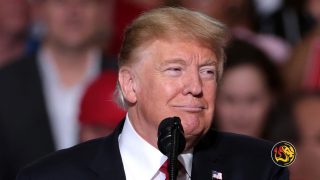Trump Unveils Sweeping Tariff Increases on Global Imports, Targets Brazil Over Bolsonaro Trial
by Worthy News Washington D.C. Bureau Staff

(Worthy News) – President Donald Trump on Wednesday announced a sweeping escalation in his global tariff policy, issuing formal letters to eight more countries warning that steep import duties will take effect on August 1 unless new trade agreements are reached. The move marks the latest salvo in Trump’s aggressive “America First” trade agenda, which he says is designed to correct decades of unfair trade practices and ballooning U.S. deficits.
Speaking from the White House, Trump explained that the tariffs were determined using what he called a “common sense” formula: “based on deficits, based on how we’ve been treated over the years, and based on raw numbers.” The letters, posted to Trump’s Truth Social account, specify tariffs ranging from 20% to 50% depending on the country’s trade deficit with the United States and its overall relationship with Washington.
Among the newly targeted nations are Brazil, Algeria, Libya, Sri Lanka, Iraq, Brunei, Moldova, and the Philippines. The most severe penalty was reserved for Brazil, which faces a 50% tariff hike–up from 10% in April. Trump cited the prosecution of former Brazilian President Jair Bolsonaro and alleged censorship of U.S. social media content as reasons for the stiffer measure.
“The way that Brazil has treated former President Bolsonaro, a Highly Respected Leader throughout the World during his term, including by the United States, is an international disgrace,” Trump wrote in a letter diverging sharply from the otherwise formulaic correspondence sent to other countries.
Other nations received tariff warnings of 30% (Algeria, Libya, Sri Lanka, Iraq), 25% (Brunei, Moldova), and 20% (Philippines). The administration emphasized that these figures may change depending on each nation’s willingness to engage in good-faith trade negotiations.
The U.S. has now issued similar letters to 29 countries. Of those announced Wednesday, only the Philippines and Brazil rank among the top 50 U.S. trading partners. Brazil exported $49 billion in goods to the U.S. last year, including oil, beef, and coffee. The Philippines contributed $14.1 billion in electronics, auto parts, and textiles. Other nations, such as Iraq and Libya, primarily export oil, but overall volumes remain comparatively small.
The tariff campaign began in April with a baseline 10% duty on all imports and higher rates on strategic targets. After a 90-day pause following stock market volatility, Trump extended the deadline to August 1 via executive order earlier this week, insisting there would be “no extensions.”
“All money will be due and payable starting August 1, 2025–No extensions will be granted,” Trump wrote on social media, framing the deadline as firm and final.
Despite the aggressive rhetoric, financial markets appeared unfazed. The Nasdaq Composite rose 0.9% on Wednesday to a record high, buoyed by a rally in Nvidia shares, which briefly pushed the chipmaker’s market cap above $4 trillion. The S&P 500 and Dow Jones also posted gains. Analysts attributed the optimism to investor confidence that the most severe tariffs might be negotiated down before implementation.
Trump also announced a new 10% tariff on imports from BRICS countries–Brazil, Russia, India, China, and South Africa–indicating his broader strategy includes punishing nations aligned with the bloc. “It would be simpler to institute tariffs across the board rather than negotiate individually,” Trump told reporters aboard Air Force One on July 3.
The administration estimates it has collected $120 billion in tariff revenues so far this fiscal year. Treasury Secretary Scott Bessent projects that figure could rise to $300 billion by year-end, with a 10-year projection of $2.8 trillion. “We think that’s probably low,” Bessent said during a July 8 Cabinet meeting.
Though foreign countries don’t pay the tariffs directly–U.S. importers do–Trump maintains that these levies create pressure on foreign governments, encourage domestic manufacturing, and generate vital revenue. Critics warn the costs are often passed on to consumers through higher prices.
The European Union, while not yet among those targeted in the latest wave, is reportedly pursuing an outline deal with the U.S. “within days or weeks” and expects to retain a 10% baseline tariff under any final agreement. Meanwhile, Trump’s team has hinted that more letters will be issued in the coming days.
All Eyes on August
With the August 1 deadline fast approaching, the administration is holding firm. Trump’s letters suggest some room for negotiation, stating: “These tariffs may be modified, upward or downward, depending on our relationship with your country.”
The Federal Reserve, meanwhile, is closely monitoring the economic effects of the tariff regime. Minutes from its June meeting released Wednesday indicate Chair Jerome Powell is taking a cautious approach to cutting interest rates–despite Trump’s claim that the U.S. is losing $360 billion annually due to elevated refinancing costs.
As the tariff showdown escalates, Trump’s message remains clear: the era of unchecked trade deficits is over, and nations must either deal–or face the consequences.
💡 Did you know? One of the best ways you can support Worthy News is by simply leaving a comment and sharing this article.
📢 Social media algorithms push content further when there’s more engagement — so every 👍 like, 💬 comment, and 🔄 share helps more people discover the truth. 🙌
Latest Worthy News
If you are interested in articles produced by Worthy News, please check out our FREE sydication service available to churches or online Christian ministries. To find out more, visit Worthy Plugins.
